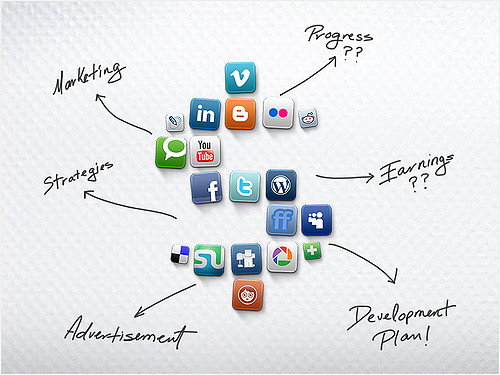
by Elizabeth Hines | Mar 10, 2016 | Blog, Manufacturing & Distribution, Strategy, Supply Chain, Talent

Manufacturing could offer a career with upward potential for STEM students at low-profile colleges.
The college graduates of 2015 were the most indebted ever — until the next round of grads wave their diplomas in the spring. But is sinking deep into debt really the ticket to a great career? If you have the means (and brains) to invest in an Ivy League degree, all stats seem to indicate you get ample payback for the $200,000-plus expense.
But among those high school grads who may not qualify for generous financial aid packages and at the same time cannot afford — or even want — an Ivy League degree, there are still lucrative options, especially if they study science, technology, engineering, and math (STEM).
The skills gap in U.S. manufacturing, for example, is well known. While as many as 60% to 70% of executives say their current employees lack sufficient skills in technology, computer, and math, the problem is exacerbated by the lack of qualified job prospects — an expected 2 million manufacturing jobs will go unfilled due to the talent gap during the next decade, according to a Deloitte study.
As I’ve said before, herein lies opportunity. There is no reason seeking a career in manufacturing should break the bank if students weigh their choices wisely. Picking a low-profile school may “pay off big both in terms of getting a good job and salary,”according to John Walsik, a Forbes contributor and author of The Debt-Free Degree.
The opportunity is best illustrated by Business Insider’s recent list of underrated colleges in America in which the US News and World Report’s rankings of the best universities was compared with PayScale’s 2015-2016 College Salary Report. Rather than pursuing degrees from the highest rated schools, high school grads should also consider schools that, although ranked relatively low on the US News list, yield high mid-career salaries.
Interestingly, Missouri University of Science and Technology, New Jersey Institute of Technology, and University of Massachusetts at Lowell, known for their science and engineering programs, all ranked in the top 5 (Pace University in New York City topped the list), with mid-career median salaries ranging from $94,700 to $102,000. Within six months of graduation, for example, 80% of New Jersey Institute of Technology graduates were either employed — top employers include IBM and ExxonMobil — or enrolled in graduate programs.
A college degree from a prestigious school means little unless your earnings quickly make it worthwhile. If only manufacturing could shake its lackluster reputation, a growing number of students may discover it holds the key to a career with a lot of upward potential — without necessarily going into big debt.
What is your take on the cost of college versus the payoff?
A version of this post previously appeared at EBN Online.

by Fronetics | Mar 9, 2016 | Blog, Content Marketing, Marketing

The other day a client called to express his frustration with content marketing. Not only was he disappointed with the number of leads that his company had obtained to date, he was also disappointed with the number of sales. He was ready to call it quits and pull the plug on all content marketing efforts.
This client was not the first to call and express frustration, nor will he be the last. Unfortunately, there is a misconception that as soon as a company incorporates a content marketing into their strategy, they will be flooded with leads — leads served on a silver platter and leads all boxed up and tied with a bow. I wish content marketing could do this — it can’t. That being said, walking away from content marketing is a big mistake — content marketing is an effective strategy that companies should employ.
The buying process for B2B buyers has become more complex and longer. The 2015 B2B Buyer’s Survey Report found that 53% of respondents reported their purchase cycle was longer than it was the previous year. The buying process has gotten longer because the majority of buyers (82%) are using more sources to research and evaluate products and services, and they are spending more time in the research phase itself. A full 80% of respondents reported they spend more time on research alone — this is up from 58% in the previous survey.
Social media and vendor-focused content are two key places where buyers turn to conduct research. More than half (53%) of survey respondents reported that social media plays in their research process, and 86% of respondents reported that content such as case studies and product data sheets influence purchase decisions.
The increased focus on research has changed when the buyers engage with a sales rep. Today, the average buyer progresses nearly 60% of the way through the purchase decision-making process before engaging with a sales rep.
Back to my client. I walked my client through these facts, and then we walked through the metrics we track on the monthly basis. Since my client had started using content marketing, traffic to his company’s website had increased significantly, visitors to the website were spending longer on it than they had before, and they were looking at more pages. Additionally the company’s social reach had grown and engagement — with customers, prospects, and others within the industry — had increased considerably. All of these things, I pointed out, were positive. I then reminded my client that the typical sales cycle for his company and industry was 12-18 months — far longer than the few short months that he had been using content marketing.
I spent the next few minutes going over the company’s content marketing strategy. We decided to make a few tweaks, and then discussed both goals and expectations going forward.
It is important for companies to recognize that content marketing should be a part of their strategy — more than ever, B2B buyers are looking for information and are using that information to make buying decisions. Companies need to be using social media. Companies need to be creating and curating quality content. It is equally important, however, for companies to realize that content marketing is not magic. Content marketing doesn’t shorten the buying process; rather it changes it. Moreover, content marketing doesn’t deliver sales — sales people still play a large role in lead nurturing and closing deals.
You may also like:
This was originally published on Electronics Purchasing Strategies.

by Fronetics | Mar 8, 2016 | Blog, Marketing, Social Media, Strategy

Social prospecting helps you identify potential customers outside your established audience using social platforms.
Social media should be an integral part of your marketing strategy — we know it helps build brand reputation, gather market intelligence, discover customer problems, and influence purchasing decisions. But your lead generation efforts should also include the use of social platforms. It’s a practice called social prospecting that can be highly effective in identifying new prospects.
You’ll use your existing social handles to identify and pursue potential customers that may be interested in your business but that don’t yet know about it. HubSpot describes social prospecting: “It’s about scouring the social web, identifying potential prospects, and engaging them through content to get them to your site and move them through your funnel.”
Why does it work?
Think about the size of your established audience. Now think about the total number of active users on social media: As of the fourth quarter of 2015, Facebook had 1.59 billion active monthly users, Twitter averaged at 305 million, LinkedIn had 414 million, Google+ had 111 million, and Pinterest had more than 100 million. Those enormous numbers equal enormous potential for your business.
That’s because social media isn’t just for recreational purposes anymore. More than half (53%) of B2B buyers report using social media to research purchases, in fact. Social prospecting allows you to be proactive in finding all of the considerable number of social-media-using prospects who are looking for you, too.
How do you get started?
If you already have a social media presence, that’s step one. It gets a little more complicated from there.
Fronetics has developed a free social prospecting workbook to learn how to use social listening to generate new leads for your business. We’ve identified the quickest way to find potential customers on Twitter, Facebook, LinkedIn, Pinterest, and Google+. Every worksheet includes:
- Short preparatory work to make the actual prospecting easy
- Visual instructions on how and where to find prospects
- Pro tips that will help you get the best results
- Prescriptions (Marketing Rx) for success
- Take-home exercises for follow-up prospecting

Happy prospecting!
Related articles:

by Fronetics | Mar 7, 2016 | Blog, Content Marketing, Marketing, Social Media

Your content stinks. Here’s why.
Twenty-seven million pieces of content are shared every day — and most of it is crap. To attract readers to your content, you must stand out, and I mean really stand out, among the masses. That’s no easy feat.
You may be spending an enormous amount of time and money as part of a content marketing effort, but, if no one is reading what you’re producing, you’re definitely not achieving your ROI. Consider the following points, and ask yourself if any could be negatively impacting your readership.
Here are the top 10 reasons no one is reading your content.
10. You don’t have a strategy.
Only 11% of companies without a documented content marketing strategy find their efforts to be successful, compared to 60% of companies with a strategy in place. And that number rises to 86% when the company designates someone to lead the strategy. Having a clear vision for your content and a plan for executing that vision is crucial to earning an audience.
9. Your content isn’t search-engine optimized.
Seventy-seven percent of today’s buyers use Google to research information about products. Search engine optimization (SEO) means writing copy for your digital assets so they will be prioritized by Google in web queries related to your business or products. Three of four people will click on the top five search results. So the further you move from those top five results, the less likely someone is to find, much less read, your content. If your content isn’t SEO-friendly, readers may not even have the chance to see what you’re writing because it is so far down in their search results.
8. You are using the wrong channels.
If a tree falls in the woods and nobody is around to hear it, did the tree fall after all? Stop publishing in the empty woods. Who is the target audience for your content, and where are they active? Evaluate your audience (or lack thereof) in each of the channels where you publish, and see if something is amiss. This will vary greatly by business. You can access personalized information on your followers’ social media habits through analytic programs like Google Analytics and sites like Tweriod.
Also to consider: on lightning-fast platforms like Twitter, a miscalculation of timing could be to blame. (See The Best Time to Post on Social Media.)
7. You’re not publishing often enough.
Inconsistent content is one of the primary reasons readers become disengaged with a particular publisher. Even publishing one more blog post a week can significantly boost your readership. Try a little experiment for a few months by playing with the number of times per week you publish — say, three times per week one month, four times the next, and five the next. You’ll find the sweet spot where you get the most engagement but can also handle the production schedule.
The next reasons have to do with the substance of the content itself.
6. You’re publishing a sales pitch instead of content.
Imagine you’re looking to buy a car. Researching different options online, Site A, run by Dealership A, offers expert opinions about various makes and models, while Site B talks about how Dealership B offers top-notch customer service and a no-nonsense negotiation policy. You’d probably never come across Site B in the first place because the content is irrelevant (and trite… and annoying), whereas Site A has exactly what you’re looking for.
Content marketing is your opportunity to provide valuable, expert information to people who are seeking it out. Associating your brand with that sort of expertise attracts customers — not to mention, helps them find you via organic search in the first place. No one wants to read your sales pitch over and over again, and they won’t.
5. You are not telling the truth.
I am talking about two different definitions of truth here.
For one, are you being honest? Today’s consumers can smell b.s. from a mile away, largely because the Internet forgets nothing and forgives nothing. The prevalence of user-review sites and platforms like social media means customers will always have an outlet to share their experiences, both good and bad. If your business does not provide what you promise, people will be upset and take to these forums to complain about it. Trust and transparency are two key assets in earning (and keeping) readership.
Secondly, are you being true to who you are as a business? A recent Harvard Business Review article defines successful marketers as mission-focused, not consumer-focused. Don’t produce content based on what you think your customers want to hear. The beauty of content marketing is that when you put your business mission out into the universe through content, people who are seeking that information find you. In other words, build it, and they will come.
4. You’re not offering anything of value.
DigitalTonto says, “The first step towards engagement is creating value beyond the basic transaction of payment for a product or service.” This is the essence of content marketing: a related offer of value in the form of expertise, entertainment, etc. For example, L’Oreal Paris provides free makeup tutorials on its YouTube channel, Destination Beauty, and, Apple offers free classes, product demonstrations, and tech support from the Genius Bar for product users.
The question to ask is, what is your value to your customers? Can you offer expert advice on a particular topic through a blog? Is there something about your products or your people that would make for entertaining or informative videos? Do you have access to top-of-their-field specialists that could lead a webinar series? Find whatever it is that is unique to your company, and leverage that in your content marketing to attract readers.
Because there is so much content out there, today’s consumers can afford to be partial to publishers who provide information in a way that is pleasing to them. They also have shorter attention spans than goldfish. That means things like format, length, accessibility, and voice can majorly impact whether people read your content or not. Also, be mindful that different platforms should offer different experiences based on reader expectations (e.g., Instagram isn’t the place for lots of text).
2. You’re not heeding performance analytics.
The one certain constant in marketing is that things will always change. What works for you one year will certainly be irrelevant the next. Content marketing won’t allow you to rest on your laurels, either. You should stay on top of your analytics to monitor what kind of content is successful in the present moment, and you should tweak how you’re doing things as people, technology, and events change. Keep testing new ideas to see how they are received, and get rid of old standbys that no longer pull their weight.
1. Your content is bad.
While this seems obvious, it’s worth repeating. If the quality of your content is bad, no one will read it, regardless of what value it offers. The same goes for if you find yourself saying, “it works,” or “it’s fine!” If there are 27 million options, who would choose “fine?”
Do an honest evaluation of your content, or have a neutral outside party do so for you. Is it original, substantial, and well-written? Make sure that your content is edited, and that it is free from grammatical errors, spelling mistakes, and awkward phrasing. And remember that you get what you pay for. Professional writers can be expensive, but there’s a reason for that — theirs is a specialized craft, and very few people can do it well. If you want people to read your content, you should make sure that it’s worth reading.
Related articles:

by Fronetics | Mar 3, 2016 | Blog, Content Marketing, Marketing, Social Media, Strategy

Source: Rosaura Ochoa | Flickr
Here’s how marketers can launch a B2B social media program that grows business.
A recent Harvard Business Review article discloses that a number of B2B CEOs still believe social media isn’t right for them, that it’s a tool for the B2C segment. In reality, many B2B marketers successfully leverage social media to engage potential customers, gather market intelligence, build brand awareness and reputation, discover and intercept customer problems, and influence purchasing decisions before sales calls are ever made.
In short, if you are not in the B2B social media game, you are missing out on enormous business opportunities.
Getting started with social media can seem like an intimidating task, especially if your C-suite is skeptical of the benefits. Here are six steps to launching a B2B social media program that will grow your business to its full potential.
1) Speak in the right terms.
Convincing management that you want your team to spend more time on social media to gain “followers” or get “shares” might be a hard sell. To win support, focus your argument around the factors that are most important to them. Lead generation, lead nurturing, conversions, sales, ROI, profits: this should be the vocabulary with which you approach this conversation.
2) Create a strategy — and put someone in charge.
Only 11% of companies without a documented content marketing strategy find their efforts to be successful, compared to 60% of companies with a strategy in place. And that number rises to 86% when the company designates someone to lead the strategy. Working with an experienced marketing consulting firm, like Fronetics, you can develop an inbound marketing strategy that aligns with your business objectives. And whether someone on your team heads up execution or you outsource that responsibility, the leader should continually monitor analytics and tweak the strategy accordingly. Which brings us to…
3) Determine which analytics to track.
In the B2B world, it’s not about shares, likes, or impressions, though those numbers speak to your brand exposure. (Read more about so-called “vanity metrics” here.) Leads generated, conversion rates, sales, and ROI are going to be the things you’ll want to track. If you have a good, flexible strategy in place, these metrics will help you adjust your efforts to ensure you’re achieving your business objectives.
See: The Six Marketing Metrics Your Boss Actually Cares About.
4) Develop quality content.
Twenty-seven million pieces of content are shared every day — and a large portion of it is crap. A social media presence could be pretty pointless unless you’re using it to push content that is original, high quality, and representative of your brand. One of the biggest mistakes B2B companies make is using social channels to push a sales pitch. You’ll quickly lose your audience, who is turned off by a strong sales pitch. Social media is about engaging your audience, building brand awareness, and offering valuable information.
See: Three Elements of Good Content.
5) Decide which channels are right for your business.
Who are you trying to reach, and what are you trying to tell them? These are good questions to ask when trying to determine which platforms will comprise your social media program. There’s a wealth of information out there about which channels are used by whom and when. You’ll also want to choose channels that you’ll be able to maintain regularly and which play to your strengths. As an obvious example, if you don’t have the capability to make videos, YouTube probably isn’t for you. Remember, you’ll likely want to work through several different channels to reach a maximum number of potential customers.
See: Which Social Media Channels Should Your B2B Business Use?
6) Follow your competitors.
Following your competitors is a great way to stay up to date on what they’re doing, especially if you don’t have a ton of time or money for competitive research. And when I say “follow,” I don’t mean “copy or imitate.” I mean subscribe to their blogs, engage with them on social media, and like and share their content that you find meaningful for your audience. This way, you become part of the industry conversation happening online, and you know exactly what your potential customers are seeing from (and how they’re reacting to) your competitors.
See: The Role of Social Media in Supply Chain Intelligence.
Related articles:

by Fronetics | Mar 2, 2016 | Blog, Internet of Things, Strategy

B2B sales must recognize and accommodate buyers at various levels of self-sufficiency in the purchasing process.
Widespread access to the Internet has changed life as we know it. Not only are once-token errands like trips to the supermarket and holiday gift shopping increasingly shifting online, but B2B buyer behavior is occurring most often in the digital space, as well. In fact, an Acquity Group study found that 94% of B2B buyers in the U.S. conduct research online to make purchase decisions.
An Internet search can yield thousands of results when a B2B buyer goes to research a specific product or service. What’s more, the buyer can access online sources reviewing and comparing different suppliers’ products, streamline purchasing through self-service shopping portals, and access digital training and support tools without ever talking to another human. Essentially, “buyers can take over many steps of buying that salespeople once cherished as their source of value,” says a Harvard Business Review article.
But this doesn’t eliminate the need for salespeople in B2B sales completely. Rather, the authors suggest that today’s sellers must develop new competencies that better serve customers with more access to information.
How B2B sales are changing
Information technology and digital channels create buyers at various levels of self-sufficiency. While some are able to gather all of the intel needed to make a purchasing decision, some are more overwhelmed than before and need help sifting through all the available information. Most buyers fall somewhere between the two ends of the spectrum. Additionally, customers can be at different levels at different times and for different products.
Therefore, salespeople need to be able to recognize where customers fall on the self-sufficiency scale and match their selling approach to the customers’ needs.
Salespeople must also be competent in various technologies that help manage customer information and outreach. CRM systems, analytics, and various infrastructures are just a few examples of digital tools sales teams have at their disposal.
New platforms like social media and email also supplant the need for traditional face-to-face selling but require an all-together different skill set. Video conferencing, podcasts, and webinars — these are also tools that sellers can use to accommodate buyer preferences and level of knowledge, should the seller be fluent in these technologies.
And with so many options to adapt to customers at various levels of self-sufficiency, salespeople must be able to coordinate communications across multiple channels. “Salespeople need competencies as orchestrators who can ensure an effective and efficient connection,” the authors suggest.
Salesforces, too, must adapt to the information age in terms of structure, training, compensation, and more.
How has your business adapted to B2B selling in the information age?
Related articles:








